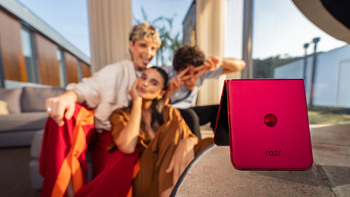That’s how to get even better photo results from the Pixel 8 and the Pixel 8 Pro
We may earn a commission if you make a purchase from the links on this page.

If you have the Pixel 8 or the Pixel 8 Pro in your pocket, that means you’re probably (scratch that, replace with “certainly”) hooked on the idea of phone photography. You didn’t buy the Pixel 8 Pro for its thermometer, did you?
So, why not get 110% out of its camera(s)? You just have to use some extra software – and, chances are, if you’re into photography, you already have it. No need to buy or subscribe extra: we’re talking about Adobe Lightroom and/or Adobe Photoshop.
That’s why those of you who want to push things further and get even more out of those very capable Pixel cameras can do so with the help of Lightroom and Photoshop, as Adobe is now supporting RAW files from the Pixel 8 (via 9to5Google).
Everyone who’s into Lightroom/Photography and (digital) photography knows what a RAW file is, but let’s not alienate those of you who are just getting into the matter and instead, let’s clarify things first and explain some terminology. All cameras produce a RAW file when you take a picture (though not all cameras give you the RAW file, many allow you to have just the JPEG).
Alongside every RAW, the camera produces a JPEG file – that’s what you see on your display. Even if you consider it to be unedited, that’s not RAW – it’s the JPEG that the system has created automatically. This JPEG has been already processed by the phone itself, think of it as ‘baked-in’.
RAW gives you the ability to enhance, edit and better your photo on a level that many consider “professional”. There are more colors available to play with in RAW, due to the bit-depth difference from the JPEG file (an 8-bit JPEG image contains up to 16.8 million colors, a 12-bit RAW image can contain up to 68.7 billion colors).
Suddenly, we’re talking about bit depths here, which wasn’t the point at all. Long story short, remember this: RAW is like getting the raw ingredients and deciding how to cook your meal; JPEG is like getting an already cooked meal: sure, you can always add some seasonings, some extra sides and even turn that vegetarian pasta into a meatball bonanza; but it’s never as good as cooking from scratch…
Sure, the Pixel 8 and the Pixel 8 Pro got their photography game up in the sky, but why not get out of it even more? Many people choose to shoot in JPEG and then edit those shots in the built-in Photos app: some filters here, some tone adjustments there…
There’s a group of people who are not satisfied with this way and tend to push it as far as it gets. They shoot RAW and usually, they have nice, big monitors at home and often spend countless hours in front of them – post-production is the name of the game.
Now, Adobe Lightroom and Adobe Photoshop are supporting RAW photos from the Pixel 8 duo (the DNG files your phone records when you set it up to do so via the camera app’s menu), giving those who own the latest Google phones a chance to shine even brighter.
The Pixel 8 gets support for Adobe Lightroom and Photoshop for RAW files from the front-facing camera, the wide-angle lens, and the main sensor. On the Pixel 8 Pro, RAW support is also available for images taken with the telephoto lens. On each device, the minimum plug-in version required is 16.0.1. To take advantage, make sure whatever Adobe programs you use are fully updated so your Pixel 8 images are supported.
So, why not get 110% out of its camera(s)? You just have to use some extra software – and, chances are, if you’re into photography, you already have it. No need to buy or subscribe extra: we’re talking about Adobe Lightroom and/or Adobe Photoshop.
Let’s lift those shadows up
Everyone who’s into Lightroom/Photography and (digital) photography knows what a RAW file is, but let’s not alienate those of you who are just getting into the matter and instead, let’s clarify things first and explain some terminology. All cameras produce a RAW file when you take a picture (though not all cameras give you the RAW file, many allow you to have just the JPEG).
This RAW file contains (so) much more data than a JPEG file – that’s why the former is 10x or 20x times “heavier” on the megabytes than the latter. This extra data comes – to put it mildly – very handy when you want to edit your photos in the aforementioned Lightroom or Photoshop (or other RAW photo software).
Alongside every RAW, the camera produces a JPEG file – that’s what you see on your display. Even if you consider it to be unedited, that’s not RAW – it’s the JPEG that the system has created automatically. This JPEG has been already processed by the phone itself, think of it as ‘baked-in’.
RAW gives you the ability to enhance, edit and better your photo on a level that many consider “professional”. There are more colors available to play with in RAW, due to the bit-depth difference from the JPEG file (an 8-bit JPEG image contains up to 16.8 million colors, a 12-bit RAW image can contain up to 68.7 billion colors).
Suddenly, we’re talking about bit depths here, which wasn’t the point at all. Long story short, remember this: RAW is like getting the raw ingredients and deciding how to cook your meal; JPEG is like getting an already cooked meal: sure, you can always add some seasonings, some extra sides and even turn that vegetarian pasta into a meatball bonanza; but it’s never as good as cooking from scratch…
Is this so important for photos from the Pixel 8 duo?
Sure, the Pixel 8 and the Pixel 8 Pro got their photography game up in the sky, but why not get out of it even more? Many people choose to shoot in JPEG and then edit those shots in the built-in Photos app: some filters here, some tone adjustments there…
Now, Adobe Lightroom and Adobe Photoshop are supporting RAW photos from the Pixel 8 duo (the DNG files your phone records when you set it up to do so via the camera app’s menu), giving those who own the latest Google phones a chance to shine even brighter.
What Adobe software version do I need?
The Pixel 8 gets support for Adobe Lightroom and Photoshop for RAW files from the front-facing camera, the wide-angle lens, and the main sensor. On the Pixel 8 Pro, RAW support is also available for images taken with the telephoto lens. On each device, the minimum plug-in version required is 16.0.1. To take advantage, make sure whatever Adobe programs you use are fully updated so your Pixel 8 images are supported.
Don't have a Pixel yet? Grab a Pixel 7 Pro at a dizzying discount!
Partner message from Mint Mobile
Google's Pixel 7 Pro may be last year's flagship, but it is certainly no slouch, and it also has a RAW toggle like the latest Pixel 8 Pro! In fact, the Pixel 8 Pro looks and feels a lot like the predecessor, which only shows that Google got it right back in 2022. The good news is that, now that the Pixel 7 Pro is "old", its price will start dropping. And Mint's offer is ahead of the curve — you get the Pixel 7 Pro for $299 (that's cheaper than a Pixel 7a!) and a full year of mobile service for the price of a 6-month plan.
Offer available for new Mint customers porting from select carriers, while supplies last.
Offer available for new Mint customers porting from select carriers, while supplies last.










Things that are NOT allowed: